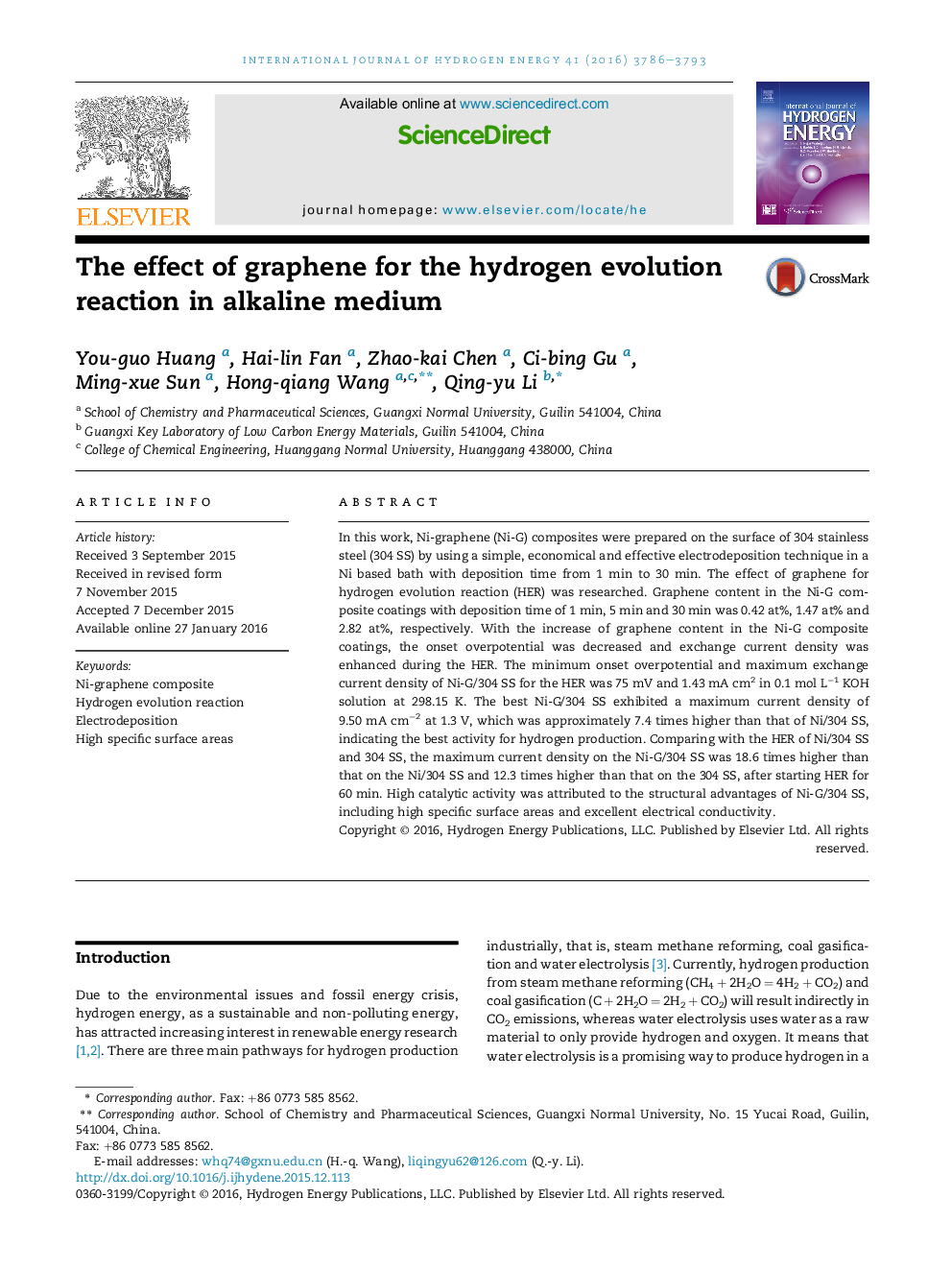| Article ID | Journal | Published Year | Pages | File Type |
|---|---|---|---|---|
| 1277907 | International Journal of Hydrogen Energy | 2016 | 8 Pages |
•Ni-graphene (Ni-G) composite were synthesized via a one-step electrodeposition.•The maximum content of graphene in the Ni-G composite was 2.82 at%.•Graphene was evenly distributed in the Ni-G composite coatings.•Ni-G/304 SS exhibited a maximum exchange current density was 1.43 mA cm2.•Ni-G/304 SS exhibited a minimum onset overpotential for the HER was 75 mV in 0.1 mol L−1 KOH solution at 298.15 K.
In this work, Ni-graphene (Ni-G) composites were prepared on the surface of 304 stainless steel (304 SS) by using a simple, economical and effective electrodeposition technique in a Ni based bath with deposition time from 1 min to 30 min. The effect of graphene for hydrogen evolution reaction (HER) was researched. Graphene content in the Ni-G composite coatings with deposition time of 1 min, 5 min and 30 min was 0.42 at%, 1.47 at% and 2.82 at%, respectively. With the increase of graphene content in the Ni-G composite coatings, the onset overpotential was decreased and exchange current density was enhanced during the HER. The minimum onset overpotential and maximum exchange current density of Ni-G/304 SS for the HER was 75 mV and 1.43 mA cm2 in 0.1 mol L−1 KOH solution at 298.15 K. The best Ni-G/304 SS exhibited a maximum current density of 9.50 mA cm−2 at 1.3 V, which was approximately 7.4 times higher than that of Ni/304 SS, indicating the best activity for hydrogen production. Comparing with the HER of Ni/304 SS and 304 SS, the maximum current density on the Ni-G/304 SS was 18.6 times higher than that on the Ni/304 SS and 12.3 times higher than that on the 304 SS, after starting HER for 60 min. High catalytic activity was attributed to the structural advantages of Ni-G/304 SS, including high specific surface areas and excellent electrical conductivity.
